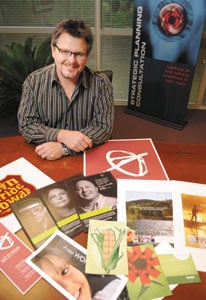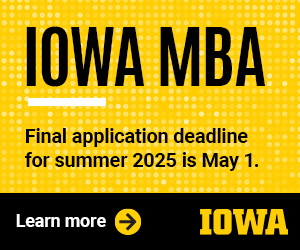Shine on

.bodytext {float: left; } .floatimg-left-hort { float:left; margin-top:10px; margin-right: 10px; width:300px; clear:left;} .floatimg-left-caption-hort { float:left; margin-bottom:10px; width:300px; margin-right:10px; clear:left;} .floatimg-left-vert { float:left; margin-top:10px; margin-right:15px; width:200px;} .floatimg-left-caption-vert { float:left; margin-right:10px; margin-bottom:10px; font-size: 10px; width:200px;} .floatimg-right-hort { float:right; margin-top:10px; margin-left:10px; margin-bottom:10px; width: 300px;} .floatimg-right-caption-hort { float:left; margin-right:10px; margin-bottom:10px; width: 300px; font-size: 10px; } .floatimg-right-vert { float:right; margin-top:10px; margin-left:10px; margin-bottom:10px; width: 200px;} .floatimg-right-caption-vert { float:left; margin-right:10px; margin-bottom:10px; width: 200px; font-size: 10px; } .floatimgright-sidebar { float:right; margin-top:10px; margin-left:10px; margin-bottom:10px; width: 200px; border-top-style: double; border-top-color: black; border-bottom-style: double; border-bottom-color: black;} .floatimgright-sidebar p { line-height: 115%; text-indent: 10px; } .floatimgright-sidebar h4 { font-variant:small-caps; } .pullquote { float:right; margin-top:10px; margin-left:10px; margin-bottom:10px; width: 150px; background: url(http://www.dmbusinessdaily.com/DAILY/editorial/extras/closequote.gif) no-repeat bottom right !important ; line-height: 150%; font-size: 125%; border-top: 1px solid; border-bottom: 1px solid;} .floatvidleft { float:left; margin-bottom:10px; width:325px; margin-right:10px; clear:left;} .floatvidright { float:right; margin-bottom:10px; width:230; margin-right:10px; clear:left;} With Jordan Creek Town Center under construction in early 2004, Abbell Credit Corp., the managing company of Merle Hay Mall, wanted to make sure the venerable shopping center remained competitive. So it decided to invest in developing a brand identity.
Working with the ZLR Ignition advertising agency, which researched what consumers were looking for and how residents viewed the mall, Abbell began using the tagline “Shop Merle Hay Mall.” Through this slogan, the shopping center rolled out advertisements on television, radio and billboards, stressing the mall’s relaxed atmosphere and variety of stores to a female audience.
Companies are beginning to spend more time and money upfront to learn how their products and services resonate with consumers before investing in marketing materials.
This trend is a result of an increase in the number of similar products and services and companies’ efforts to compete for consumers’ attention through a multiplying number of channels. A need to stand out as a brand and connect on an emotional level with the consumer has become key to a business’ success.
“Conventional wisdom dictates that there’s a kind of reached frequency idea, in other words, the more often your message gets out, the more likely it is that it is going to be effective,” said Doug Van Andel, vice president and executive creative director of Strategic America, an integrated marketing services agency. “The problem is, if you don’t have that key thing, relevance, then it really doesn’t matter how often it gets seen.”
The ultimate goal in developing a brand identity is to reach a level where a group of consumers become “loyal to a product beyond reason,” Van Andel said. At this level, a company has developed a “love mark” with its audience, a term coined by Kevin Roberts, CEO of advertising giant Saatchi & Saatchi, to describe consumers’ loyal relationships to brands such as Starbucks and Apple.
“I call it brand intuition, a brand intuitive truth that makes the brand significant or relevant, and if you tap into that, then you can build a brand that’s going to resonate and somewhere down the line … it turns brand enthusiasts into evangelists,” said Van Andel, who launched Toyota Prius’ campaign while working at Saatchi and was recognized as one of the world’s top 10 creative directors in 2002 by Boards magazine.
Localizing brands
Brand principles apply to national as well as local companies trying to attract a core audience within a limited geographic area.
Having gone through the process of developing a brand identity “gave us a new focus,” said Elizabeth Holland, CEO of Abbell Credit, “what we needed to do to be better, what other types of stores people were looking for.”
Other local organizations have had similar successes.
Iowa State University became one of the first public universities to develop a brand identity in the late 1980s, said Carole Custer, ISU’s director of university marketing, with the tagline “Iowa State University. It works.” Over the years the school has continued to redefine its message, but throughout has stressed its image as a large campus with a small-school feel, focusing on ISU’s wide range of degree programs and activities within a comfortable setting. Custer said this has been a way of bringing a large university with hundreds of programs under one image that can then be presented to prospective students, and that branding campaigns have paid off in its admission numbers.
“We’ve had wonderful response from students in past campaigns that say, ‘I know that comes from Iowa State,'” said Custer, “and that has to do with the university’s commitment to developing materials that have the same consistent messages and same consistent color palette.”
About two years ago, Iowa State began working with ZLR, which it had worked with on past campaigns, to recast its image. Through focus groups of faculty and staff as well as current and prospective students, the university launched the campaign “Enjoy the adventure,” which focuses on students’ experience at ISU and the opportunities they have to learn and develop as individuals.
Strategic America has worked with Branson, Mo., to rebrand its image to attract younger generations than the age 55-plus demographic that often attend many of the city’s shows. Branson already had a report with background research on what people were looking for before it asked Strategic America for help in creating a marketing strategy. With further research into what the city had to offer, the advertising agency realized that unlike popular tourism areas, such as Orlando, Chicago and New York City, the destination was less intimidating and expensive and offered many activities that could appeal to families.
From there, Strategic America came up with the slogan “Someone you love is always playing in Branson” and focused its television and print advertisements on appealing to people’s desires to connect with their family through a vacation experience.
Though people 55 and older make up the majority of people visiting Branson’s Web site, according to Strategic America, the next demographic is 25- to 35-year-olds followed by 45- to 55-year-olds, a sign that the message is reaching multiple generations.
The process
Developing a brand identity, experts say, starts with research, which is often the most important step.
The goal is to learn about the product or service and its core audience, through methods such as focus groups, interviews and basic data collection. Van Andel also believes that to narrow the point of focus even further, companies should have a good understanding of the culture in which their the products fit.
“From there you try to match their vision, goal or strategy with what it is that makes [the product] relevant to the consumer and then it’s really translation of that to the consumer that makes the brand work,” said Louis Laurent, president of ZLR.
The most effective way to stand out in consumers’ minds, said James Lynch of Performance Marketing, is to find a point of differentiation from the company’s brand and the rest of the competition.
With the explosion of the Internet and an array of new programs connected to it, the means through which a company can reach its audience with its brand message has changed dramatically. In the past, advertisers relied on only television, print and radio; agencies now encourage companies to determine which medium best reaches their audience at the right time.
“I think as a whole, the communications industry is embracing that technology, but it doesn’t mean the old media are going away,” Laurent said. “It’s changing. We’re getting to be much more of an entertainment and information-on-demand society.”
Merle Hay Mall’s campaign, for example, still reaches the target audience through television and billboards. Join the Ride, a campaign started by the Iowa Farm Bureau Federation to promote Iowa as a renewable energy center, is trying to gain enthusiasm for renewable energy through public appearances of its motorcycle (built by Orange County Choppers of “American Chopper” fame to run on renewable energy) and through its Web site.
The increase in new media opportunities has also provided an avenue for brands to reach a niche audience, such as advertising gardening gloves on Home & Garden Television or golf balls on The Golf Channel.
“You can now really use your consumer’s lifestyles, media preference and interests to really target on a certain kinds of products,” Lynch said.
To navigate the opportunities, ad agencies encourage companies to look at what their target audience does at certain points of the day, what media they’re using and when they want certain information. For example, a food company may want to target a mother while she’s watching the morning news and thinking about what to make for dinner that night, Lynch said.
If the message is consistent, relevant to an audience and reaches them in an effective way, the brand has the potential to not only create more sales, but also change a company internally.
While creating a brand identity for Minnesota-based Ag Co., Van Andel said, the company so valued the advertisements that featured the faces of people from within the company and the concept of “Quality People. Quality Products” that it hung them as large posters within its manufacturing plant. ISU has large banners with the same “adventure” message hanging in its admissions hall and other areas around Ames, Custer said.
Common mistakes
Laurent has found that what a company thinks consumers want or are interested in about its product or service often is not what consumers are actually attracted to.
When interviewing faculty at ISU about what they thought students wanted, Laurent said many thought that students were worried about getting a job after graduation, the school’s ranking or having good professors and facilities. While those were a part of the entire package, ZLR found that students who chose ISU were primarily interested in feeling comfortable, which allowed the agency to target the school’s brand to that emotional level.
The other mistake, Laurent said, is that many companies use the same language, such as “in search of excellence.” “The consumer filters that out, because it’s not relevant,” he said. “You have to demonstrate your excellence.”
Some companies also rely too much on promotions or sales, so consumers become trained to buy a product when there’s a discount. “The whole idea behind building a strong brand is so there’s equity there,” Laurent said. “Whoever your consumer is, (he or she should be) willing to pay a fair price, so the business can make a profit.”
Above all, the biggest mistake experts say a company can make is ignoring its brand identity completely. “Even though you might not know it, [consumers] definitely have a strong point of view of who you are,” Lynch said.
“I think very few people understand what a brand is. … I think there is a tendency to try to take the path of least resistance. ‘What’s the easiest communication for me to make?'” Van Andel said. “Usually that manifests itself in things like, ‘I need to make my logo bigger,’ or ‘I need to have a more strident voice-over’ or ‘I need to push hard sell,’ instead of going through the exercises on really understanding what advantage that product has.”








